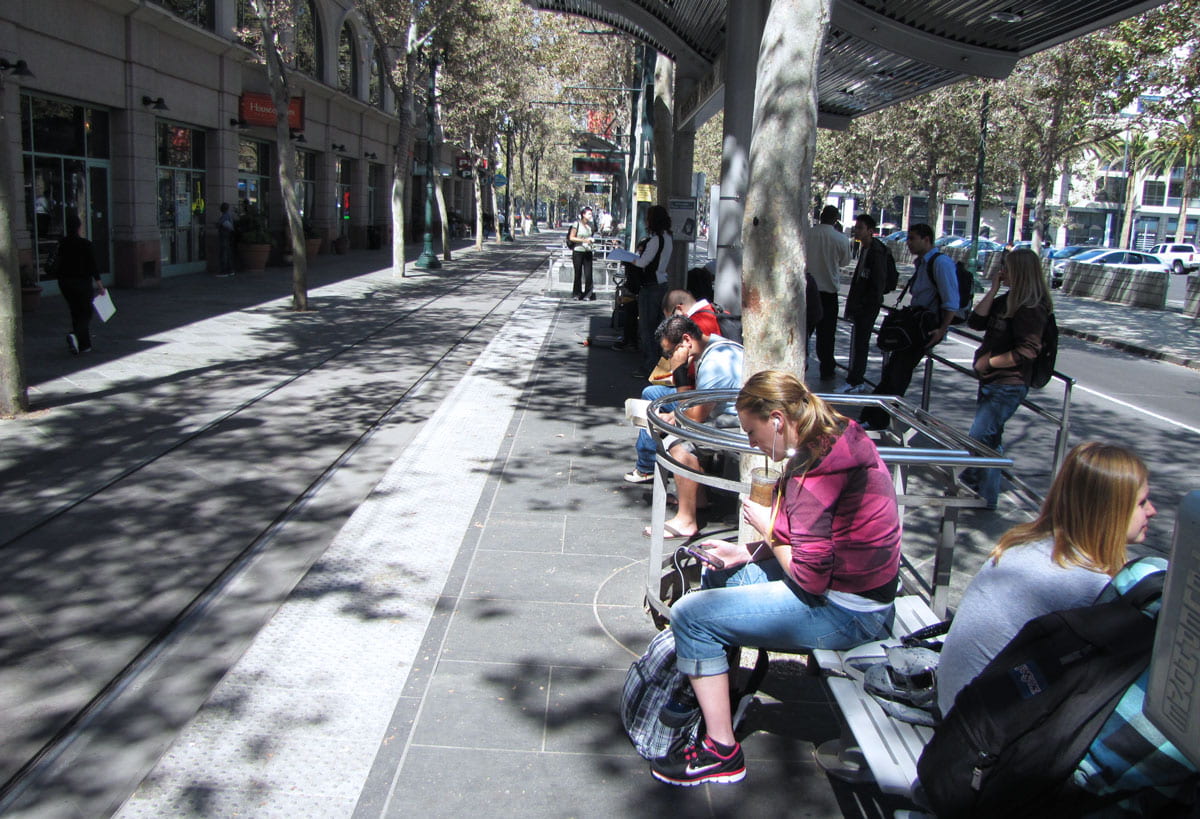“I was riding the metro alone on a Sunday morning, and as I turned the corner, there was a man masturbating. I was scared and ran away,” recalls Asha Weinstein Agrawal of an incident she encountered as a college student during a vacation in Paris two decades ago.
The Professor of Urban and Regional Planning and the Director of Mineta Transportation Institute (MTI) National Transportation Finance Center Agrawal says although she didn’t talk about it then, there’s a need today to start conversations around sexual harassment and recognize behaviors and patterns that women who use public transit witness all over the world.
Over the last three years, almost two-thirds (63 percent) of SJSU students had experienced some form of harassment while using the bus or train, according to the recent MTI-sponsored research study titled “Crime and Harassment on Public Transportation: A Survey of SJSU Students Set in International Context.”
Agrawal’s team includes UCLA Professor Anastasia Loukaitou-Sideris, one of the global project leaders who put together the original survey, Assistant Professor of Mathematics and Statistics Cristina Tortora and Yajing Hu, now a senior scientist at Abbott, who worked as a data analytics intern with the team. The SJSU survey asked essentially the same questions as the global study: “Does sexual harassment happen to you? Are you worried? Have you ever reported? Does fear of harassment change the way you use transit?”
The survey found that public transit harassment is not unique to San Jose State students. Agrawal’s team worked on data collected from a random sample of 891 SJSU students. With that many voices woven in, the SJSU narrative mirrors typical concerns that students around the world expressed when the same survey was administered in 18 cities across six continents, including San Jose, Los Angeles, Vancouver and Mexico City in North America, Bogota, Sao Paolo and Rio Claro in South America, London, Paris, Milan, Lisbon, Stockholm, and Huddinge in Europe, Tokyo, Guangzhou and Manila in Asia, Lagos in Africa and Melbourne in Australia.
Although fear of harassment binds all respondents together across demographics, Agrawal has a guess about the underlying reasons behind why SJSU students were less likely to feel “always” or “often” safe after dark on the bus or on the train, compared to students in the other cities in the global study. She points to downtown San Jose’s features after dark—mostly empty streets and transit vehicles. The responses could easily vary in European and Asian cities that have considerable activity on the streets after dark. In addition, relatively high proportions of university students don’t have the luxury of driving private cars. Compared to the population at large, students more frequently use public transit, especially in the United States.
Agrawal says abuse on public transit is not new. Having studied the transportation of 1890s America as part of her doctoral research, she saw that women feared sexual harassment on public transit then, too. “Nice women didn’t want to ride the street cars because they would get groped or harassed” was a common refrain in the articles she remembers reading during her dissertation writing days. There is new attention on the topic of sexual offense today as part of the MeToo movement, but it’s been happening all around the world ever since there was public transit, she adds.
As Agrawal argues, that train of thought is still what stops some women from using public transit. Women throughout history have found themselves at society’s margins, as have older adults, vulnerable people and those who identify as LGBTQ, whose fear of harassment has influenced their participation in broader society.
Transit trips are not limited to vehicle settings. Rather, they are multi-phased activities, including riding on vehicles, waiting at transit stops or walking/biking to and from those points. The survey looked at the transit experience in these three areas as well. “Besides asking for experiences on the bus or on the train, we also asked about while you’re waiting, either at the bus stop or the train stop, and also the access journey,” says Agrawal. These environments are not controlled by transit operators, but offer perspectives on choices a rider may make about using transit. The goal of the survey was to understand how safety concerns affect their choice of transit.
With so many students taking public transit every day, Agrawal wondered if there would be a correlation between the amount of harassment and number of complaints filed. “Unfortunately, that’s not the case,” she says. “People often think it’s so commonplace that there’s no point reporting, or that even if they do, it hardly yields results,” which in turn leads to a feeling of helplessness in victims.
Harassment is largely perceived to be a woman’s issue. Men’s experiences don’t often make it to the headlines. The SJSU survey revealed that 40 percent of men experienced sexual assault on buses or trains, expanding the conversation beyond gender identities.
Agrawal is hopeful that the results of the survey could be a starting point for transit operators to consider certain measures that can proactively address the issues. She says transit operators—and others— who’ve built apps for commuters to report graffiti and broken lights could consider adding a category of language that would make sexual harassment reporting easier, “thus making it more obvious that there is a problem.”

